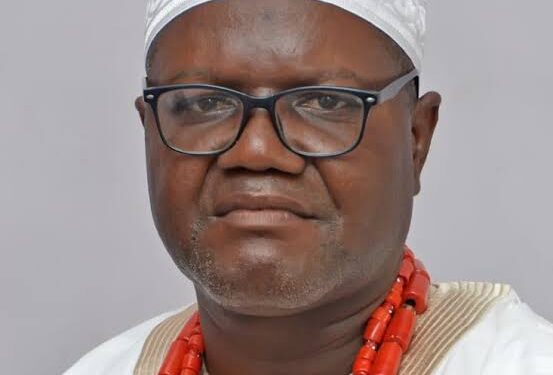By Sayo Àlàgbe
The recent handover of the re-awarded Ogbomoso-Oyo section of the new highway from RCC Construction Company Limited to an indigenous firm, JRB Construction Company Limited, at a staggering cost of ₦147.89 billion, has ignited widespread celebration in Ogbomoso. Residents are filled with hope that a road once notorious for fatal accidents will soon be transformed into a safe and accident-free highway for motorists and commuters.

His Royal Majesty, Oba Bólárìnwá Ezekiel Olajide, Olajide 1, Onísápá of Ìsápá in Ogbomoso South Local Government Council Area of Oyo State shared his excitement in an exclusive interview with ScoopChase.com at his Ìsápá palace. A renowned philanthropist, who has made significant contributions to his community and the nation at large, expressed immense joy upon hearing the news of the project’s re-award. He commended the federal government for issuing a marching order for the road’s rapid completion, emphasizing that once finished, the highway—serving as a critical link between Southern and Northern Nigeria—will not only enhance safety but also boost economic activities between the two regions.
A devout Christian and advocate for youths empowerment, Oba Bólárìnwá—who has consistently provided succour, and financial aid to the less privileged in Ogbomoso—extended his heartfelt congratulations to the Soun of Ogbomosoland, Oba Ghandi Afolabi Olaoye – Orumogege III, Senator Fatai Omotayo Buhari (representing Oyo North Senatorial District), Hon. Olamijuwonlo Ayodeji Alao-Akala, and other distinguished sons of Ogbomoso for their relentless efforts in ensuring that the Bola Ahmed Tinubu-led federal government prioritized the completion of the long-abandoned highway.
The Onísápá of Ìsápá also personally witnessed the mobilization of JRB Construction Company’s heavy equipment at the Federal Government School – Baby Area end of the Ibadan-Oyo-Ogbomoso-Ilorin dual carriageway. He noted that the swift deployment of machinery signals the company’s commitment to immediately commencing construction work on the remaining 7 kilometers of the highway.
While commending the federal government for this crucial intervention, the monarch called on Ogbomoso technocrats with expertise in road construction to volunteer for regular inspections and technical supervision of the project to ensure quality execution. He further urged the people of Ogbomoso to remain prayerful and steadfast, emphasizing the importance of divine intervention and cooperation of other prominent Obas in town with unity of purpose, progress and development to prevent any disruptions, as had occurred in the past.
It is important to note that the project was re-awarded to JRB Construction Company Limited following allegations of non-performance against the former contractor, RCC Construction Company Limited.
You can get every of our news as soon as they drop on WhatsApp ...To get all news updates, Join our WhatsApp Group (Click Here)













We shall keep praying for the completion as soon as possible.